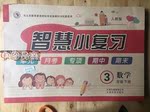题目内容
She is one of the few girls who _____ in the kindergarten.
A. is well paid B. are well paid C. is paying well D. are paying well
B

 智慧小复习系列答案
智慧小复习系列答案Fatimah Bamun dropped out of Balizenda Primary School in the first grade, when her father refused to buy her pencils and paper. Only after her teachers said to him that his daughter showed unusual promise(有希望) did he change his mind. Today, Fatimah, 14, tall and slender, studies math in a dirt-floored fourth-grade classroom.
Whether she will reach the fifth grade is another matter. Fatimah is facing the realities of a school with no toilet, no water, no hope of privacy (隐私) other than the shadow of a bush, and no girlfriends with whom to share feelings. Fatimah is the only girl of the 23 students in her class. In fact, in a school of 178 students, she is one of the only three girls who have made it past the third grade.
“I have no friend in the class,” she said. “Most of my friends have dropped out to get married. So during the break, I just sit in the classroom and read.”
Her father, however, now says he is fully behind her. “The people from the government are all the time telling us to send our daughters to school, and I am listening to these people,” he said.
But in many cases, parents don’t listen. Parents think that if the girls stay home, they can help with the harvesting, fetch the water and collect the firewood. So they take them out of school.
In a region where poverty, tradition and ignorance make about 24 million girls not even have an elementary school education. There are many other barriers (障碍) that prevent girls going to school, such as the lack of school toilets and water.
The issue is not only equality. The World Bank thinks that if women in sub-Saharan Africa had equal education, land and other wealth, the region’s economy could improve greatly. There is a connection between growth in Africa and sex equality. It is of great importance but still ignored by so many people.
【小题1】The author’s purpose in writing the passage is to _______.
| A.find the cause of Africa’s poverty |
| B.describe the poor education conditions of African girls |
| C.prove the inequality in African society |
| D.reform the present schooling systems in Africa |
| A.Fatimah is a girl who shows signs of success for the future. |
| B.Fatimah’s father is now giving a lot of support to her. |
| C.Fatimah is the only girl who has made it past the fifth grade in her school. |
| D.Fatimah has no friends at school because they most of them have dropped out to get married. |
| A.most African girls are treated equally in society |
| B.African governments don’t care whether girls go to school or not |
| C.most African girls would rather get married than go to school |
| D.African girls can’t enjoy equal chances for education |